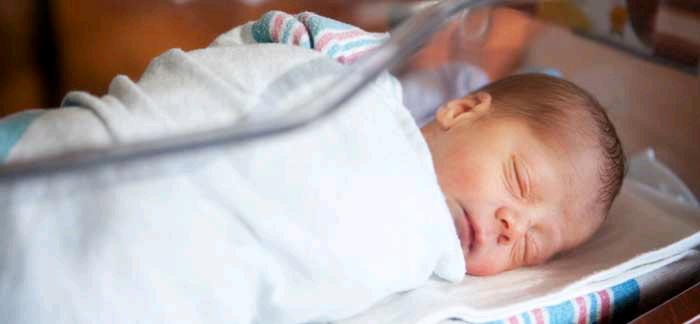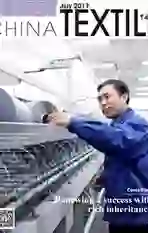What to expect when you’re expecting to sell baby items
2017-07-19byFloraZhao
by+Flora+Zhao
The phrase “as soft as a babys bottom” doesnt mean much until you actually come into contact with a newborn baby, where the difference between adult skin and this tiny creature is startling. And for such a precious bundle, only the softest of fabrics touch its skin upon birth.
Hospitals across the country have been safely swaddling newborns in the same light flannel blanket for decades. And babys first onesie the indispensable wardrobe staple for an infants first year is inevitably made of soft cotton. Of course, the wardrobe and bedding choices expand greatly from those first days in the maternity unit. But one thing that remains is parents trust in the natural softness and breathability of cotton.
At Wild Child, a Madison, WI-based baby and childrens clothing, toys and accessories boutique, natural fibers are part of the stores founding principle.
“Cotton is soft, breathable, its a natural fiber, and its been around for a very, very long time so people trust it. Parents want comfort and they want their babies and kids to be comfortable,” says Jules West, manager, and daughter of the stores founders Renee and Bill West.“When we started the store in 1982, my mom would always wear cotton. But even though she wore it herself, she couldnt find it for her kids it was all polyester. So she started with that. Nowadays, theres a lot of cotton for children.”
It seems makers have come to realize what parents favor: Among those who purchase infant/toddler products, close to 9 in 10 (89 percent) prefer clothes to be cotton-rich, according to the Cotton Incorporated Lifestyle Monitor? Survey. This compares to general synthetics (1 percent) and polyester (1 percent).
Additionally, the Monitor? research shows the preference for cotton continues with infant and toddler blankets, as 75 percent of consumers want those to be cotton-rich. That compares to fleece (7 percent), polyester (3 percent), wool (2 percent),and synthetics (1 percent).
Now, those candy stripe blankets that are likely to be the first fabric to touch a hospital-born baby shortly after entering the world are called Kuddle-Up blankets. Theyre all made by Medline, of Mundelein, IL. In an interview with NPR, Jim Robertson, president of the companys Medcrest textile division, said Medline sells about one and a half million units of that style each year. In fact, he said the style sold about 25 million since 1980, although it has been available since the 1950s, when it was established as a staple item in the companys catalog. Other patterns are available with ducks, chickens, baby footprints, and dinosaurs. But the familiar candy stripe is a pediatric staple.
Those hospital blankets are so soft, durable, and easy to launder, they often stay in rotation long after baby is brought home. And parents look to emulate that quality in the products they purchase for their little ones. Among those who purchase infant/toddler products, more than half (54 percent) always or usually read fiber content information before purchasing infant/toddler clothing & textiles, according to the Monitor?.
The childrens apparel market is forecast to increase about 1.7 percent in 2017 to reach $46.1 billion, according to Mintel research. The infant/toddler sector is the smallest in childrens, carrying 20 percent of total category sales and accounting for less than $10 billion. However, Mintel says infant/toddler should grow at a pace on par with girls clothing, or 1.5 percent on average annually from 2017 to 2021.
Brands and retailers might keep in mind that compared with manmade fiber apparel, more than 3 in 4 consumers say cotton apparel is the most sustainable(84 percent), soft (81 percent), comfortable (80 percent), authentic (80 percent), trustworthy (79 percent), and appropriate for casualwear (77 percent), according to Monitor? data. Also, nearly 3 in 4 consumers (73 percent) believe better quality garments are made from natural fibers like cotton. And at least 6 in 10 consumers are willing to pay slightly more to keep cotton from being substituted with synthetics in categories like underwear(65 percent), bed sheets (65 percent), and T-shirts (60 percent).
Wild Child is known for carrying clothes made of all natural fibers, as well as Made in USA and Fair Trade products. Besides offering brands like Blade & Rose, Bee Funny Baby, and Aden & Anais.
At Babylist, an online registry that allows parentsto-be to register from different retailers even local stores or Etsy shops cotton plays a heavy role in its list of “Best Baby Clothes 2017”. The registry highlighted cottonrich items like the Spasilk cotton body suit, Magnificent Babys poppie footie, Zutano booties, Trumpette baby socks, and Zippy Fun bandana bibs.
Wild Childs West says the force of the market is dictating all these the cotton products. “When it comes to buying clothes for kids, people are really protective,”she says. “And whatever theyre looking for, brands are looking to make sure theyll provide it.”
杂志排行
China Textile的其它文章
- Co-located shows return to shine New York City this July
- Fashion on a piece of cloth
- The First China Textile Intangible Cultural Heritage Conference to make its debut
- The 2nd China Eco-friendly Fabric Design Competition will return back to Shengze
- Eurasian geotextiles started a new chapter of communication
- Renewing a success with rich inheritance
